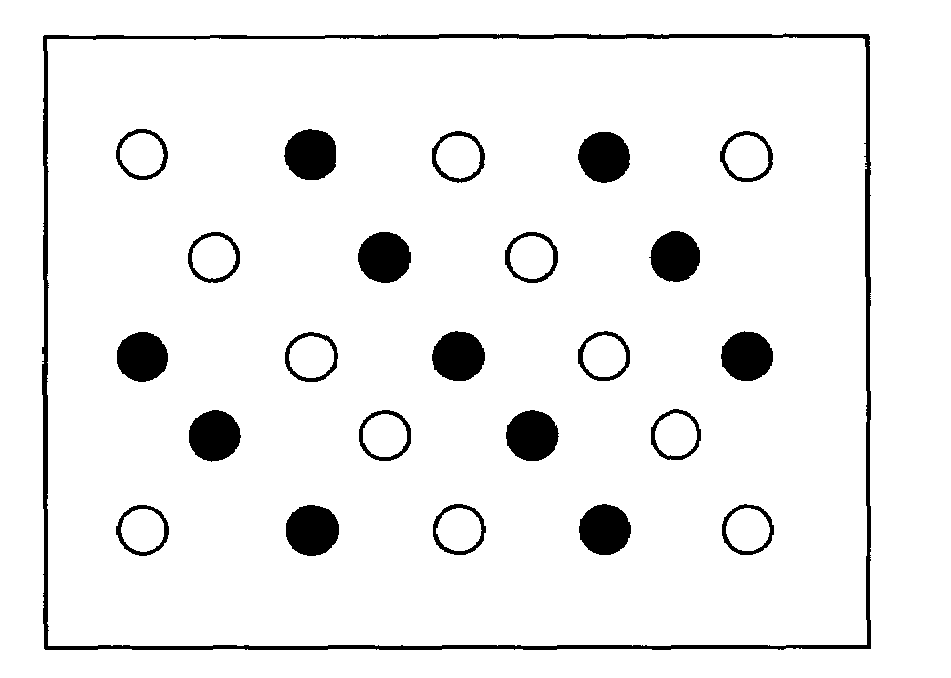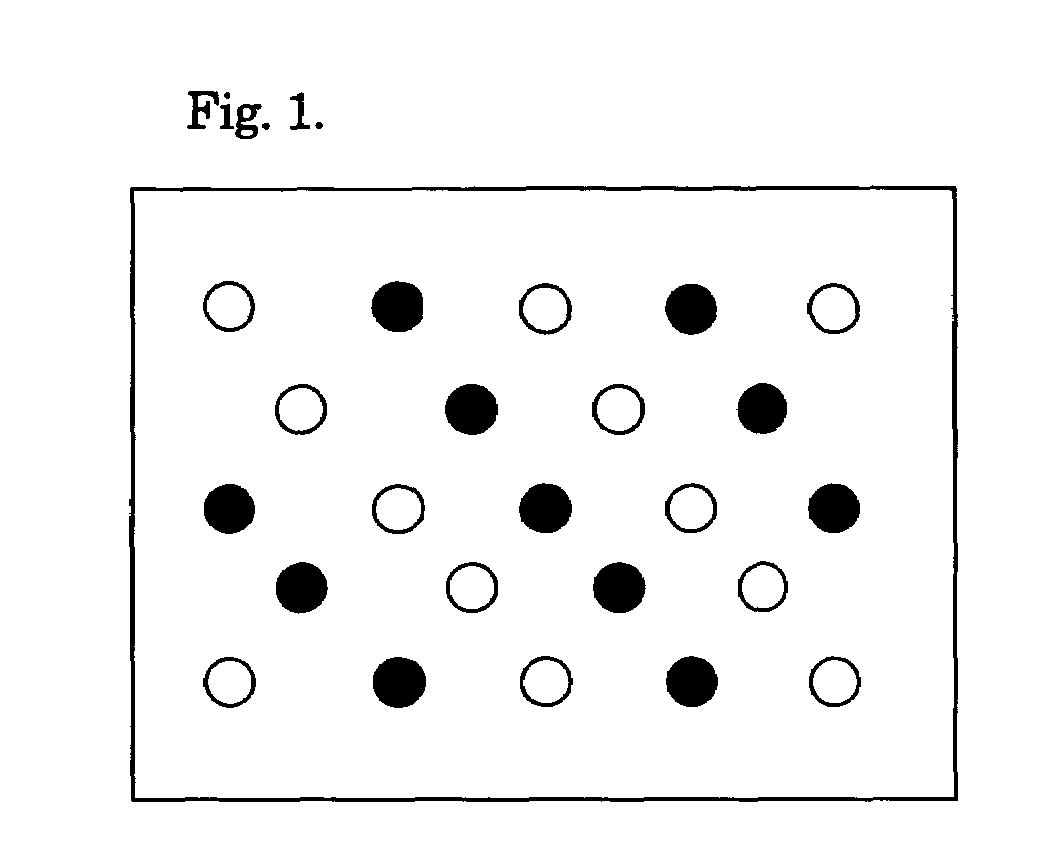Elastic nonwoven fabric and fiber products manufactured therefrom
a technology which is applied in the field of elastic nonwoven fabric and fiber products manufactured therefrom, can solve the problems of high tension needed for unwinding, unsuitable elastic nonwoven fabrics made from highly elastic thermoplastic elastomers, and inability to manufacture directly, etc., and achieves low production cost, high productivity, and easy production
- Summary
- Abstract
- Description
- Claims
- Application Information
AI Technical Summary
Benefits of technology
Problems solved by technology
Method used
Image
Examples
example 1
[0098]A melt-blown nonwoven fabric was manufactured from the elastomeric resin B-1 and nonelastomeric resin A-1 in an apparatus comprising two extruders equipped with a screw 30 mm in diameter, heating elements and a gear pump, spinnerets for combined yarns (501 holes 0.3 mm in diameter, alternately for different yarns arranged in a row, 500 mm in effective width), an air compressor, an air heater, a collecting conveyor with a polyester net, and a take-up. The elastomeric and nonelastomeric resins were charged in the respective extruders, and melted by heating to 230° C. and 270° C., respectively. The gear pumps were set so that the weight ratio of the elastomeric / nonelastomeric resin was 95 / 5. The molten B-1 resin was discharged through the spinneret at a rate of 0.242 g per minute per hole, and the molten A-1 at 0.013 g per minute per hole. The threads formed were blown onto the conveyor, located at a distance of 25 cm from the spinneret and running at a rate of 2 m / min, by means ...
example 2
[0099]An elastic nonwoven fabric was manufactured as in Example 1, except that the weight ratio of the elastic / nonelastic resin was 90 / 10 and the spinning rate was 0.230 g per minute per hole for B-1 and 0.026 g per minute per hole for A-1. Properties of the fabric obtained are summarized in Table 1. This nonwoven fabric showed a good elasticity and antiblocking property, an adequate strength under elongation, and favorable feeling.
example 3
[0100]An elastic nonwoven fabric was manufactured as in Example 1, except that the weight ratio of the elastic / nonelastic resin was 80 / 20 and the spinning rate was 0.204 g per minute per hole for B-1 and 0.051 g per minute per hole for A-1. Properties of the melt-blown elastic nonwoven fabric obtained are summarized in Table 1. This nonwoven fabric showed a good elasticity and antiblocking property, an adequate strength under elongation, and favorable feeling.
[0101]A laminated elastic nonwoven fabric was manufactured by laminating a melt-blown nonwoven fabric made of the resin A-1, with a fiber diameter of 2 μm and a basic weight of 2 g / m2, onto the fabric obtained in Example 3 using a hot embossed roller. The laminated fabric 2000 m in length was rolled and stored in a room at a temperature of 50° C. and humidity of 80%, simulating a warehouse environment in summer, for seven days. Subsequent measurement showed a peeling strength of 0.5 N / 25 mm, indicating good antiblocking propert...
PUM
| Property | Measurement | Unit |
|---|---|---|
| Length | aaaaa | aaaaa |
| Fraction | aaaaa | aaaaa |
| Fraction | aaaaa | aaaaa |
Abstract
Description
Claims
Application Information
 Login to View More
Login to View More - R&D
- Intellectual Property
- Life Sciences
- Materials
- Tech Scout
- Unparalleled Data Quality
- Higher Quality Content
- 60% Fewer Hallucinations
Browse by: Latest US Patents, China's latest patents, Technical Efficacy Thesaurus, Application Domain, Technology Topic, Popular Technical Reports.
© 2025 PatSnap. All rights reserved.Legal|Privacy policy|Modern Slavery Act Transparency Statement|Sitemap|About US| Contact US: help@patsnap.com


